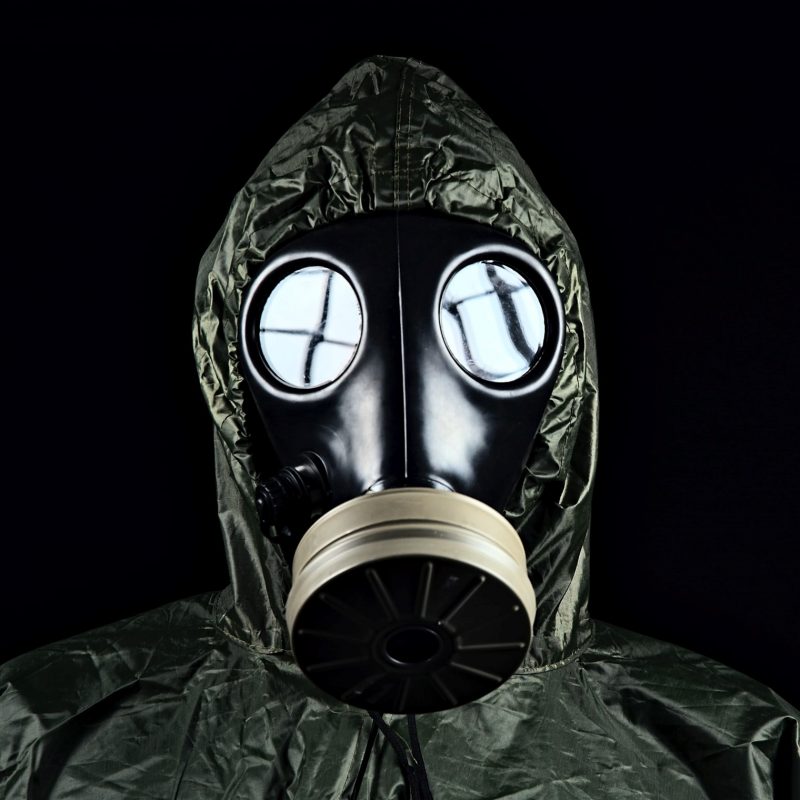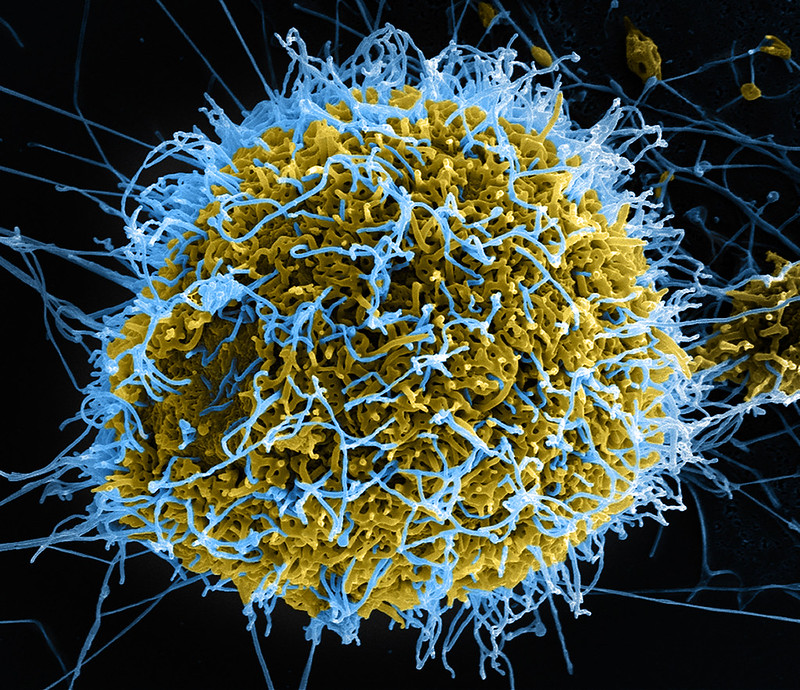
Tiny-alien invasion risk
The threat of an alien invasion is generally thought of in terms of little green men, laser blasters, and towering motherships. But the reality might be much tinier. On November 18, 2021, a group of scientists called for “greater recognition of space biosecurity risks” by the space industry. Their statement explained:
Space biosecurity concerns itself with both the transfer of organisms from Earth to space (forward contamination) and vice-versa (backward contamination). While the research points out that at present the risk of alien organisms surviving the journey is low, it’s not impossible.
One of the study’s co-authors, Phill Cassey – head of the Ecology & Evolutionary Biology Department of the University of Adelaide in Australia – said:
Risks that have low probability of occurrence, but have the potential for extreme consequences, are at the heart of biosecurity management. Because when things go wrong, they go really wrong.
The peer-reviewed journal BioScience published these researchers’ paper on November 17.
The science of tiny-alien invasion
A new field of invasion science has grown over the past few decades. This field addresses the causes and consequences of introducing organisms into new environments. Alien invasions have already happened inside Earth’s biome. For example, humans have unwittingly introduced drug-resistant bacteria to Antarctica, infecting seabirds and seals.
It’s not such a jump to imagine the same could happen between, say, Earth and Mars, or vice versa. That’s why the scientists want the space-faring community to establish protocols for early detection, hazard assessment, rapid response and containment procedures, such as those currently used in response to invasive species threats on Earth. Plus, Cassey said:
It is far cheaper to prevent biological contamination by implementing protocols on Earth than it is on Mars.

Space biosecurity management
The goal of biosecurity management is to reduce or eliminate threats to native species, whether that be human, animal and plant life on Earth or as-yet undiscovered life in space. The scientists are striving for planetary biosecurity both here on Earth and on “alien” worlds.
When human activities introduce life forms on Earth to nonnative regions, it can have long-ranging effects. We’ve infected areas from the poles to mountaintops to deep in the ocean. These organism transfers sometimes result in changes to biodiversity, ecosystems and even evolution. Cassey commented:
We need to take action now to mitigate those risks.

Greater risk for space-faring humans
Humans are advancing into our solar system – our sun’s family of planets – in leaps and bounds. China landed a rover on Mars in May 2021. The European Space Agency will launch a Mars rover next year. NASA obtained a sample of asteroid Bennu that is headed back to Earth at this moment, with a landing date in 2023. With these remarkable achievements come hidden dangers, these scientists said. The proliferation of both government and private space missions greatly increases the chance of cross-contamination between Earth and space. As the paper explained:
Space is emerging as a new frontier of biosecurity risk.
And, as Cassey pointed out:
In addition to government-led space missions, the arrival of private companies such as SpaceX has meant there are now more players in space exploration than ever before.
Regulatory and policy frameworks have not kept up with the increasing amount of players. The scientists said that the odds of life forms from an extraterrestrial body hitching a ride back to Earth on a spacecraft are highly improbable, yet they are also not zero. The scientists compare a biological invasion scenario to an extreme natural disaster event such as a major earthquake that, although rare, would have unacceptable potential consequences.
In 2019, an Israeli lunar lander crashed on the moon. It was carrying thousands of dormant tardigrades. These little creatures are famous for their ability to withstand extreme temperatures, desiccation and radiation. A study in 2021 declared that they did not survive the hard landing, but the event made the risk a real possibility.
Biosecurity safety proposals
The scientists propose four areas that space-faring groups should consider as essential for biosecurity and disaster preparedness.
1. Vulnerability reduction, such as recognizing risks and weak links and having systems in place for preventing biological contamination
2. Rapid response and assessment, including the ability to detect an alien organism, assess its risk of colonization, and have a response plan to eradicate or contain the organism
3. Access to reliable information and coordination among managing authorities
4. Interdisciplinary input to enable the identification of critical knowledge gaps
At the moment, invasion biologists are not part of the Committee on Space Research Planetary Protection planning. The scientists argue for their inclusion. They said that:
… greater collaboration between invasion biologists and astrobiologists would enhance existing international protocols for planetary biosecurity, both for Earth and for extraterrestrial bodies that could contain life.
Bottom line: Scientists are preparing for an alien invasion of the microbial kind. They urge biosecurity measures to protect Earth from alien invaders and to protect other planets from earthly life.
Via the University of Adelaide
Read about the Martian meteorite that may have been contaminated with Earthly organics.
The post Tiny-alien invasion risk: More space biosecurity measures needed? first appeared on EarthSky.
from EarthSky https://ift.tt/3cHU7TV

Tiny-alien invasion risk
The threat of an alien invasion is generally thought of in terms of little green men, laser blasters, and towering motherships. But the reality might be much tinier. On November 18, 2021, a group of scientists called for “greater recognition of space biosecurity risks” by the space industry. Their statement explained:
Space biosecurity concerns itself with both the transfer of organisms from Earth to space (forward contamination) and vice-versa (backward contamination). While the research points out that at present the risk of alien organisms surviving the journey is low, it’s not impossible.
One of the study’s co-authors, Phill Cassey – head of the Ecology & Evolutionary Biology Department of the University of Adelaide in Australia – said:
Risks that have low probability of occurrence, but have the potential for extreme consequences, are at the heart of biosecurity management. Because when things go wrong, they go really wrong.
The peer-reviewed journal BioScience published these researchers’ paper on November 17.
The science of tiny-alien invasion
A new field of invasion science has grown over the past few decades. This field addresses the causes and consequences of introducing organisms into new environments. Alien invasions have already happened inside Earth’s biome. For example, humans have unwittingly introduced drug-resistant bacteria to Antarctica, infecting seabirds and seals.
It’s not such a jump to imagine the same could happen between, say, Earth and Mars, or vice versa. That’s why the scientists want the space-faring community to establish protocols for early detection, hazard assessment, rapid response and containment procedures, such as those currently used in response to invasive species threats on Earth. Plus, Cassey said:
It is far cheaper to prevent biological contamination by implementing protocols on Earth than it is on Mars.

Space biosecurity management
The goal of biosecurity management is to reduce or eliminate threats to native species, whether that be human, animal and plant life on Earth or as-yet undiscovered life in space. The scientists are striving for planetary biosecurity both here on Earth and on “alien” worlds.
When human activities introduce life forms on Earth to nonnative regions, it can have long-ranging effects. We’ve infected areas from the poles to mountaintops to deep in the ocean. These organism transfers sometimes result in changes to biodiversity, ecosystems and even evolution. Cassey commented:
We need to take action now to mitigate those risks.

Greater risk for space-faring humans
Humans are advancing into our solar system – our sun’s family of planets – in leaps and bounds. China landed a rover on Mars in May 2021. The European Space Agency will launch a Mars rover next year. NASA obtained a sample of asteroid Bennu that is headed back to Earth at this moment, with a landing date in 2023. With these remarkable achievements come hidden dangers, these scientists said. The proliferation of both government and private space missions greatly increases the chance of cross-contamination between Earth and space. As the paper explained:
Space is emerging as a new frontier of biosecurity risk.
And, as Cassey pointed out:
In addition to government-led space missions, the arrival of private companies such as SpaceX has meant there are now more players in space exploration than ever before.
Regulatory and policy frameworks have not kept up with the increasing amount of players. The scientists said that the odds of life forms from an extraterrestrial body hitching a ride back to Earth on a spacecraft are highly improbable, yet they are also not zero. The scientists compare a biological invasion scenario to an extreme natural disaster event such as a major earthquake that, although rare, would have unacceptable potential consequences.
In 2019, an Israeli lunar lander crashed on the moon. It was carrying thousands of dormant tardigrades. These little creatures are famous for their ability to withstand extreme temperatures, desiccation and radiation. A study in 2021 declared that they did not survive the hard landing, but the event made the risk a real possibility.
Biosecurity safety proposals
The scientists propose four areas that space-faring groups should consider as essential for biosecurity and disaster preparedness.
1. Vulnerability reduction, such as recognizing risks and weak links and having systems in place for preventing biological contamination
2. Rapid response and assessment, including the ability to detect an alien organism, assess its risk of colonization, and have a response plan to eradicate or contain the organism
3. Access to reliable information and coordination among managing authorities
4. Interdisciplinary input to enable the identification of critical knowledge gaps
At the moment, invasion biologists are not part of the Committee on Space Research Planetary Protection planning. The scientists argue for their inclusion. They said that:
… greater collaboration between invasion biologists and astrobiologists would enhance existing international protocols for planetary biosecurity, both for Earth and for extraterrestrial bodies that could contain life.
Bottom line: Scientists are preparing for an alien invasion of the microbial kind. They urge biosecurity measures to protect Earth from alien invaders and to protect other planets from earthly life.
Via the University of Adelaide
Read about the Martian meteorite that may have been contaminated with Earthly organics.
The post Tiny-alien invasion risk: More space biosecurity measures needed? first appeared on EarthSky.
from EarthSky https://ift.tt/3cHU7TV

Aucun commentaire:
Enregistrer un commentaire